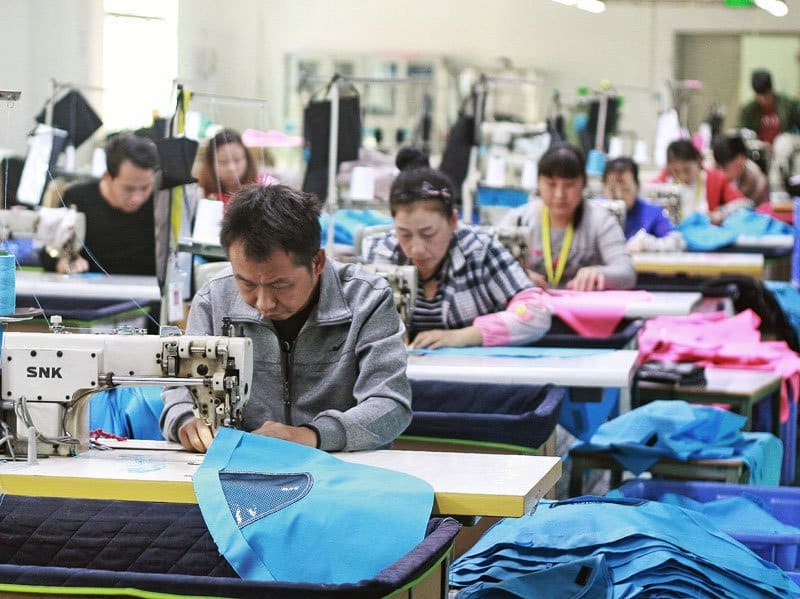Overview
Choosing the right manufacturing location is a complex decision that significantly impacts a product’s success and operational efficiency. This guide outlines the critical factors to consider when selecting a manufacturing location, including cost considerations, logistical advantages, and navigating legal and economic landscapes. It provides a comprehensive look at how each of these factors—from direct costs like labor and materials to broader considerations such as compliance with local regulations and economic stability—plays a crucial role in determining the most suitable manufacturing site. The guide also discusses the importance of the human element in manufacturing, highlighting the need for access to skilled labor and the challenges of cultural and language barriers.
Additionally, it covers the necessity of protecting intellectual property and the strategic benefits of optimal market access and brand positioning. Environmental considerations and the financial implications of stock in transit are examined to ensure that companies can align their manufacturing strategies with sustainability goals and manage cash flow effectively. Ultimately, the guide stresses that selecting a manufacturing location should align with long-term business strategies and market demands to enhance competitive advantage and ensure sustainable growth.
What is meant by “Manufacturing Location”?
A manufacturing location refers to the physical site where a company’s products are assembled or produced. The decision on where to establish these facilities is crucial, as it can significantly influence the overall success and efficiency of the product lifecycle. This choice impacts not only the direct costs associated with production but also broader aspects such as logistics, supply chain dynamics, and the final product’s marketability. This article aims to explore various essential factors that should influence this decision, including operational costs, logistical convenience, and customer perception, among others. Each of these elements plays a pivotal role in ensuring that the manufacturing location aligns with the company’s business strategies and market demands, ultimately affecting the product’s quality, availability, and consumer appeal.
Why the Choice of Manufacturing Location Matters
The choice of manufacturing location is pivotal for multiple reasons, each impacting a company’s operational efficiency and market success. Firstly, the location determines the cost of production, influenced by local labour costs, raw material availability, and regulatory burdens. Additionally, it affects the logistics and supply chain management, where proximity to key suppliers and markets can drastically reduce transportation costs and improve the responsiveness of the supply chain. Importantly, the choice of location also influences customer perception, as products made in regions known for quality craftsmanship can command higher prices. Furthermore, it can affect the ease of doing business, including the speed of scaling operations and navigating local regulations. Ultimately, selecting the right manufacturing location is a strategic decision that can enhance competitive advantage, optimise production costs, and align with a company’s broader business goals.

Choosing a Manufacturing Location Process
Step 1: Cost Considerations
In the realm of manufacturing, discerning the true cost of production involves a nuanced evaluation of both direct and indirect expenses. Labour, materials, and utilities play pivotal roles in shaping the financial landscape of manufacturing operations. However, a comprehensive understanding extends beyond these tangible elements to encompass hidden costs and potential savings, including tax incentives and governmental subsidies. By meticulously analysing these factors, businesses can gain a clearer picture of the economic viability of various manufacturing options, facilitating informed decision-making processes.
Import duties and trade regulations represent additional layers of complexity in the cost considerations for manufacturing. These levies can significantly impact product pricing and competitiveness, exerting varying degrees of influence depending on the manufacturing location and target market. A thorough comprehension of import duties is essential for accurately assessing the financial implications of production decisions. By navigating these trade norms adeptly, businesses can optimise their manufacturing strategies to maximise cost-efficiency and market competitiveness.
Furthermore, disparities in import duties between different regions, such as China and Mexico, underscore the importance of strategic decision-making in manufacturing. By leveraging insights into import duties and trade regulations, businesses can fine-tune their manufacturing strategies to align with broader financial objectives and market dynamics. Through proactive analysis and informed decision-making, companies can mitigate risks, capitalise on opportunities, and cultivate sustainable manufacturing practices that drive long-term success.
Step 2: Logistical Advantages
When selecting a manufacturing location, cost considerations are essential, encompassing both direct and indirect expenses that influence the overall financial outlay. Key direct costs include labor, which can vary significantly between regions; materials, whose availability and price are affected by local market conditions; and utilities, which can impact operational expenses based on local rates and infrastructure. Furthermore, potential tax incentives and government subsidies can play a crucial role in reducing these direct costs, making some regions financially more attractive than others.
On the other hand, indirect costs such as import duties and trade regulations also profoundly impact the final product pricing and competitiveness in the global market. For instance, products manufactured in China might incur higher import duties when sold in the U.S. compared to those produced in Mexico, due to different trade agreements and tariffs. This can make a substantial difference in the end price paid by consumers, affecting the product’s competitive edge in international markets. Understanding these cost dynamics is vital for making an informed decision about where to establish manufacturing operations, ensuring that both direct and indirect costs align with the company’s strategic financial goals.

Step 3: Navigating Legal and Economic Landscapes
Local Regulations and Compliance
Navigating the legal and economic landscapes is a critical aspect of choosing a manufacturing location. Local regulations and compliance can significantly impact business operations, especially in terms of labor laws, environmental regulations, and standard business practices. It’s crucial to understand these elements to ensure that manufacturing activities are not only cost-effective but also compliant with local laws, which can vary widely between regions. This includes everything from minimum wage standards and working conditions to stringent environmental laws that dictate waste management and emissions.
Moreover, political and economic stability of a region plays a fundamental role in deciding on a manufacturing site. Manufacturing in areas that are politically unstable or economically volatile poses significant risks. Such instability can lead to unpredictable changes in regulations, potential disruptions in production, and could affect the overall investment security. Assessing these risks is essential to avoid unforeseen complications that could impact the supply chain and overall business continuity. Companies must weigh these factors carefully to ensure that the manufacturing location supports long-term stability and profitability, aligning with broader strategic objectives.
Step 4: The Human Element
The human element plays a pivotal role in the decision-making process for selecting a manufacturing location. Access to a skilled labor force is crucial as it directly impacts the efficiency, quality of work, and innovation capacity of manufacturing operations. The local workforce’s skill levels and specialization can vary significantly between regions, influencing not only the quality and productivity of the manufacturing process but also the ease of implementing advanced technologies and processes. Ensuring that the selected location has a robust educational infrastructure and a technically proficient workforce is essential for maintaining competitive manufacturing standards.
Additionally, cultural differences and language barriers can pose significant challenges in global manufacturing operations. These issues can lead to misunderstandings and inefficiencies that hinder business processes and team dynamics. Adopting strategies to overcome these challenges is crucial for successful international manufacturing. This may include providing language training for key staff, hiring local liaisons who understand the cultural and business nuances of the region, and developing cross-cultural training programs to help align diverse teams. Effectively managing these human-related factors ensures smoother operations and can significantly enhance productivity and cohesion within the company.
Step 5: Intellectual Property Protection
Intellectual Property (IP) protection is a crucial consideration when selecting a manufacturing location, as it safeguards a company’s innovations and competitive advantage. The robustness of IP laws and the effectiveness of their enforcement vary significantly across different countries and regions, making it essential to choose a location that not only recognizes but also rigorously protects intellectual property rights.
Countries with strong IP protection laws provide a secure environment for businesses to operate without the fear of imitation or theft of ideas, designs, or technologies. This security is vital for industries where innovation is rapid and patents, trademarks, and copyrights are central to the business model. Ensuring that these legal frameworks align with a company’s needs can prevent future legal disputes and potential loss of revenue, especially in high-tech, pharmaceutical, and creative industries.
Moreover, the presence of comprehensive IP laws can enhance foreign direct investment and foster an innovative business environment. Companies should consider whether the potential manufacturing locations have signed international IP treaties, like the Paris Convention or the Agreement on Trade-Related Aspects of Intellectual Property Rights (TRIPS), which offer a baseline of IP protection and procedural uniformity that can simplify multinational operations.
Therefore, when evaluating potential manufacturing sites, it is imperative to assess the local IP landscape. This includes understanding local IP law nuances, the speed and effectiveness of the judicial system in IP matters, and the general culture of innovation protection within the country. Aligning with regions that prioritise and enforce IP rights not only protects the company’s assets but also supports its long-term growth and stability in the global market.

Step 6: Market Access and Customer Perception
Assessing Market Access
Market access is a critical factor when choosing a manufacturing location, as it directly impacts the logistics, cost-effectiveness, and customer satisfaction of a business. Proximity to key markets or customer bases can significantly reduce transportation costs, shorten delivery times, and enhance the overall customer experience by ensuring faster product availability. This geographical advantage is especially beneficial in industries where speed is a competitive advantage or where products are bulky or expensive to ship. Optimising market access not only improves operational efficiencies but also strengthens the relationship with customers by meeting their needs more promptly and reliably.
Impact on Brand Value and Pricing
The choice of manufacturing location also profoundly affects brand value and the pricing strategies a company can employ. Manufacturing in regions perceived as high-quality production hubs, such as Germany for engineering products or Italy for fashion items, can enhance a brand’s prestige, allowing it to command premium prices. Conversely, products manufactured in regions with a less favourable manufacturing reputation may be perceived as lower quality, even if this is not the case, potentially forcing a business to compete on price rather than quality. This perception is influenced by cultural associations, historical manufacturing strengths, and consumer biases, making the choice of location a strategic decision that impacts brand positioning and profitability in the global market.
Step 7: Environmental Considerations
When selecting a manufacturing location, environmental considerations are becoming increasingly critical due to the growing emphasis on sustainability and corporate responsibility. The role of environmental regulations cannot be understated, as these laws vary significantly between regions and can influence operational practices, compliance costs, and the company’s public image. A location with stringent environmental regulations may require additional investment in cleaner technologies and practices, but it can also mitigate the risk of fines, legal challenges, and reputational damage associated with non-compliance.
Moreover, aligning the choice of manufacturing location with the company’s sustainability goals is essential for fostering long-term corporate responsibility. Companies looking to enhance their green credentials should consider locations that not only comply with high environmental standards but also support sustainable practices through incentives for renewable energy usage, waste reduction, and eco-friendly manufacturing processes. Choosing a location that aligns with these principles can help a company reduce its carbon footprint, capitalise on the growing consumer preference for sustainable products, and strengthen its brand as an environmentally conscious entity.
Therefore, when evaluating potential manufacturing sites, it is crucial for companies to consider both the regulatory environment and how well the location supports their sustainability objectives. This alignment not only ensures compliance and aids in risk management but also positions the company favourably in the eyes of environmentally conscious stakeholders and customers, enhancing its overall marketability.

Step 8: Financial Implications of Stock in Transit
The financial implications of stock in transit are significant, particularly concerning cash flow management for companies engaged in manufacturing and distribution. Stock in transit refers to inventory items that have been shipped but have not yet reached their destination. This period can range from a few days to several weeks, depending on the distance, mode of transportation, and logistical efficiency, during which the invested capital is tied up without generating any return.
The prolonged period of stock in transit can strain a company’s cash flow because the money spent on manufacturing and shipping the products is not recuperated until the items are delivered and sold. This delay affects the liquidity and operational funds available for other critical business activities such as production, marketing, and development.
To mitigate these financial impacts, companies can adopt several strategies. First, optimising the supply chain to reduce the transit time can significantly help. This might involve choosing manufacturing locations closer to key markets or improving logistical arrangements by partnering with more efficient shipping and handling services. Another strategy is to enhance inventory management practices to better predict demand and adjust stock levels accordingly, thereby minimising excess inventory in transit.
Additionally, businesses can negotiate better payment terms with suppliers and customers to improve cash flow. For example, they might arrange for partial payment upon shipment rather than upon delivery, or negotiate longer payment terms with suppliers to align better with cash inflows.
By carefully managing stock in transit and implementing strategic measures to mitigate its financial impact, companies can maintain healthier cash flow, ensuring more stable and sustainable business operations.
Step 9: Long-term Strategic Considerations
Expansion Potential
When choosing a manufacturing location, planning for future growth is essential. This includes considering the potential for expanding the manufacturing facilities and whether the location can support scalable manufacturing solutions. A location that allows for expansion can accommodate increased production needs as the company grows, avoiding the costly and disruptive process of relocating. It is also important to assess the availability of additional labor, resources, and infrastructure that can support scaling operations. Selecting a location with these considerations in mind ensures that as demand increases, the company can smoothly increase its production capacity without significant delays or additional costs.
Exchange Rates and Currency Risks
Currency risks and exchange rate fluctuations are significant financial factors that companies must manage when operating in international markets. Exchange rates can dramatically affect the cost of production and profitability, especially when substantial costs are denominated in foreign currencies. For example, a strengthening of the currency in the country where manufacturing costs are paid can lead to increased expenses in home currency terms, squeezing profit margins. To mitigate these risks, companies can use financial instruments such as forwards, futures, and options to hedge against unfavourable currency movements. Additionally, setting up multi-currency accounts to manage receivables and payables in different currencies and negotiating contracts in stable currencies can also reduce exposure. Managing these currency and financial risks is crucial for maintaining financial stability and protecting profit margins in the long term.
“No country is ever successful in the long term… without a really strong and vibrant manufacturing base.”—Alan Mulally, American aerospace engineer

Is China a good place to manufacture a product?
Let’s get straight to it:
Pros of Making in China:
- Cost Savings: China is often cheaper for manufacturing, helping you cut down on overall production costs due to lower labour rates.
- Top-Notch Infrastructure: With a robust manufacturing setup, China can handle everything from simple products to high-tech gadgets efficiently.
- Scalability: Adjusting production volume is generally easier here, which is great for scaling your business according to market demands.
- Local Suppliers: An extensive network of local suppliers makes it easier and cheaper to source materials.
Cons of Making in China:
- Quality Control: Quality can vary, which means you’ll need to stay on top of quality assurance to keep your standards high.
- IP Risks: Intellectual property rights are a big concern; it’s crucial to have strong agreements in place to protect your ideas.
- Communication Hurdles: Language and cultural differences can complicate communications, potentially leading to misunderstandings.
- Long Supply Chains: If your main market is far from China, expect longer lead times and higher shipping costs.
- Changing Regulations: The legal landscape can be tricky to navigate with frequent changes that can affect your business.
- Trade Tensions: Recent trade issues between China and other countries could mean higher tariffs and market instability.
Bottom Line:
Choosing China for manufacturing depends on how these pros and cons impact your specific needs. It’s key to do your homework, possibly consult with experts, and think about using local partners to help navigate the risks. Manufacturing in China might be perfect for some, but it’s not a one-size-fits-all solution.

Low-cost manufacturing solutions outside of China
Here are some alternatives to manufacturing in China that still offer competitive costs:
- Vietnam: Emerging as a strong contender for manufacturing, Vietnam offers lower labour costs and a growing infrastructure. It’s particularly suitable for industries like textiles, electronics, and footwear.
- India: With its vast labour force and improving infrastructure, India provides cost-effective manufacturing options, especially for industries like pharmaceuticals, textiles, and automotive components.
- Mexico: Proximity to the United States makes Mexico an attractive option for companies looking to reduce shipping costs and lead times. It offers competitive labour rates, especially for industries like electronics, automotive, and aerospace.
- Thailand: Known for its skilled workforce and supportive government policies, Thailand offers cost advantages for industries like automotive, electronics, textiles and food processing.
- Eastern Europe: Countries like Poland, Romania, and Hungary offer competitive labour rates coupled with proximity to major European markets, making them attractive for industries like automotive, machinery, and electronics.
- Malaysia: With a well-developed infrastructure and skilled workforce, Malaysia is a viable alternative for industries like electronics, textiles, and machinery.
- Philippines: The Philippines offers lower labour costs and English proficiency, making it suitable for industries like bag manufacturing and garment production.
Each of these alternatives has its own set of advantages and considerations, so it’s essential to evaluate factors like labour costs, infrastructure, regulatory environment, and logistics before making a decision.






Choosing a Manufacturing Location FAQs
How do I choose a factory location?
Choosing the right factory location involves a strategic evaluation of multiple factors to ensure optimal operational efficiency and cost-effectiveness. Key considerations include assessing market access to minimise shipping costs and improve service, evaluating supply chain logistics through local infrastructure like transport networks, and analysing labour market conditions to ensure a skilled workforce at competitive costs. Additionally, it’s important to consider local regulatory and environmental compliance, political and economic stability, and the overall quality of life which can impact employee retention and productivity. These factors collectively determine the most advantageous site for a factory, aligning operational needs with strategic business growth.
Which is the first step of factory location selection?
The first step in selecting a factory location is to conduct a comprehensive Market Access Assessment. This involves evaluating the proximity of the potential locations to your key markets and customer bases. Understanding how accessible these markets are from various locations helps in minimising logistics costs, reducing delivery times, and enhancing overall customer satisfaction. This initial assessment sets the foundation for more detailed analyses involving supply chain logistics, labour markets, cost evaluations, and other critical factors that will influence the final decision.
What factors are most critical to the location decision for a manufacturer?
Selecting the most crucial factors for choosing a manufacturing location depends significantly on the specific needs and strategic priorities of a business. However, generally, the three most important factors typically include:
- Supply Chain Logistics: Efficient logistics are vital for minimising production and distribution costs and ensuring timely delivery of materials and finished products. A location with excellent access to transportation networks such as major highways, railroads, ports, and airports can dramatically reduce logistical headaches and costs. This factor is crucial for businesses that rely on a complex supply chain that includes multiple geographies.
- Labour Availability and Costs: The availability of a skilled labour pool at competitive costs is essential for maintaining operational efficiency and product quality. This includes not only the cost of labour but also the skill level, work ethic, and productivity of the workforce. Additionally, the local labour laws and union activity can impact business operations and flexibility, making this a critical consideration.
- Market Access: Proximity to key markets ensures that products can be delivered quickly and at lower costs, enhancing customer satisfaction and responsiveness to market demands. Being close to your customer base can also improve market intelligence and service quality, making this a strategic priority for customer-focused businesses.
These three factors are interconnected and often the most critical in ensuring that a manufacturing location aligns well with a company’s operational strategies and market goals. They collectively influence cost-efficiency, product quality, customer satisfaction, and ultimately, the competitiveness of the business in the global market.
Why is location important in manufacturing industry?
Location is crucial in the manufacturing industry as it directly influences production costs, including land, labor, and utilities, and impacts the efficiency of supply chains by affecting transportation costs for raw materials and finished goods. Proximity to key markets enhances customer service and responsiveness, while the regulatory and economic stability of a region can significantly reduce operational risks. Additionally, local incentives and energy costs can further influence the overall cost-effectiveness and sustainability of manufacturing operations, making the choice of location a strategic decision pivotal to a company’s success.
Is the UK a manufacturing country?
Yes, the UK remains a significant player in the manufacturing sector, though its economy is now more service-oriented. Historically an industrial powerhouse, it continues to lead in advanced manufacturing fields such as aerospace, automotive, and pharmaceuticals with global firms like Rolls-Royce and GSK.
For consumer product manufacturing, the UK is not often the first choice simply due to the high costs and lack of a supplier base for raw materials. However we still work with Uk factories for a range of different products from small plastic widgets to textile bags. It is possible but you have to look hard to find these suppliers or work with a design company like D2M who has the contacts!
But in general terms, despite facing challenges like Brexit and the need for investment in new technologies, the UK manufacturing industry contributes substantially to the GDP and employs millions, maintaining its crucial role in the national economy and offering opportunities for growth in emerging sectors like renewable energy and biotechnology.

Conclusion
In conclusion, selecting a manufacturing location is a strategic decision that requires careful consideration of a multitude of factors. These include direct and indirect costs, logistical efficiencies, labor market conditions, legal and regulatory environments, and the broader economic and political landscape. Furthermore, the choice of location significantly affects intellectual property protection, environmental sustainability, and the overall brand perception in the marketplace. By thoroughly evaluating these elements, businesses can ensure that their chosen manufacturing site aligns with both their immediate operational needs and long-term strategic goals, enhancing their ability to compete effectively in the global market. Ultimately, the right manufacturing location not only optimises production costs and maximises profitability but also supports sustainable business practices and fosters innovation, positioning companies for success in an increasingly complex and competitive business environment.

